SPACE February 2023 (No. 663)
The 2023 Venice Biennale will be held from the 20th of May to the 26th of November in the Giardini and Arsenal. Appointed as the Biennale’s curator, Lesley Lokko postulated the African Continent to be the future and presented global topics including climate change, migration, technological advancement, and imbalance, all under the theme ʻThe Laboratory of the Future’. The Korean Pavilion’s response to this objective is more clearly expressed through the theme of ʻ2086: Together How?’. Hosted by Arts Council Korea, the ʻPreliminary Forum for the Korean Pavilion at the 2023 Venice Biennale International Architecture Exhibition’ provided an opportunity to delve into the Korean Pavilion’s vision for the laboratory of the future.
The artistic directors overseeing this year’s Korean Pavilion are Jung Soik (principal, Urban Mediation Project) and Park Kyong (professor, University of San Diego). While there have been only one artistic director in charge of the exhibition at the Korean Pavilion in the past, this year’s exhibition, unprecedentedly, will be prepared through a collaboration between two artistic directors. ‘2086: Together How?’ is the theme presented by the two directors, who have been carefully thinking about a variety of practical approaches to resolve the immediate social problems from the perspectives of the city and architecture. The exhibition aims to shed light on the deficiencies and concerns for the future that the world must face at this point in time (even if technological advancement and economic growth are still growing apace) and to ultimately seek practical ways of bridging the gap between them. The year 2086 represents the moment at which the world population is anticipated to reach its peak. The exhibition hypothesises that 2086 will mark the year when there will be a fundamental change in community and society as a result of climate change, ushering in a new paradigm for human civilisation. How can we live together at that time, when the world population reaches its maximum? Taking this question as inspiration, the exhibition portrays life in a new ecosystem that we may well confront in the near future.
In this exhibition in the Korean Pavilion, three teams on the theme ‘Future Communites’ present the potential of this new community through case studies of three local communities in Korea. This aligns with the exhibition’s sub-theme, which is ʻFuture Communities in Post-Anthropocene Life: CiViChon 3.0’. CiViChon is a notion created by combining the first two letters of the words ‘City’ and ‘Village’, as well as the Korean word chon, which means a farming village. CiViChon, which signifies a city in a village, is a notion presented by director Park Kyong at the Vienna Biennale for change 2021. It refers to a virtual space in which urban culture is integrated into a farming village in order to promote the balance of the two regions, implying the potential of a new community. CiViChon as the notion is a ʻvirtual village located in a virtual place in Korea where virtual buildings are situated’. It is based on the history, topography, and sociocultural pattern engraved in the actual village in Korea, yet it refers to an incomplete community that is being built by mobilising the imagination. Having a view on this, the three artists seek ways, forms, and future communities of a third life in which people may live together without regard for physical space and forms.
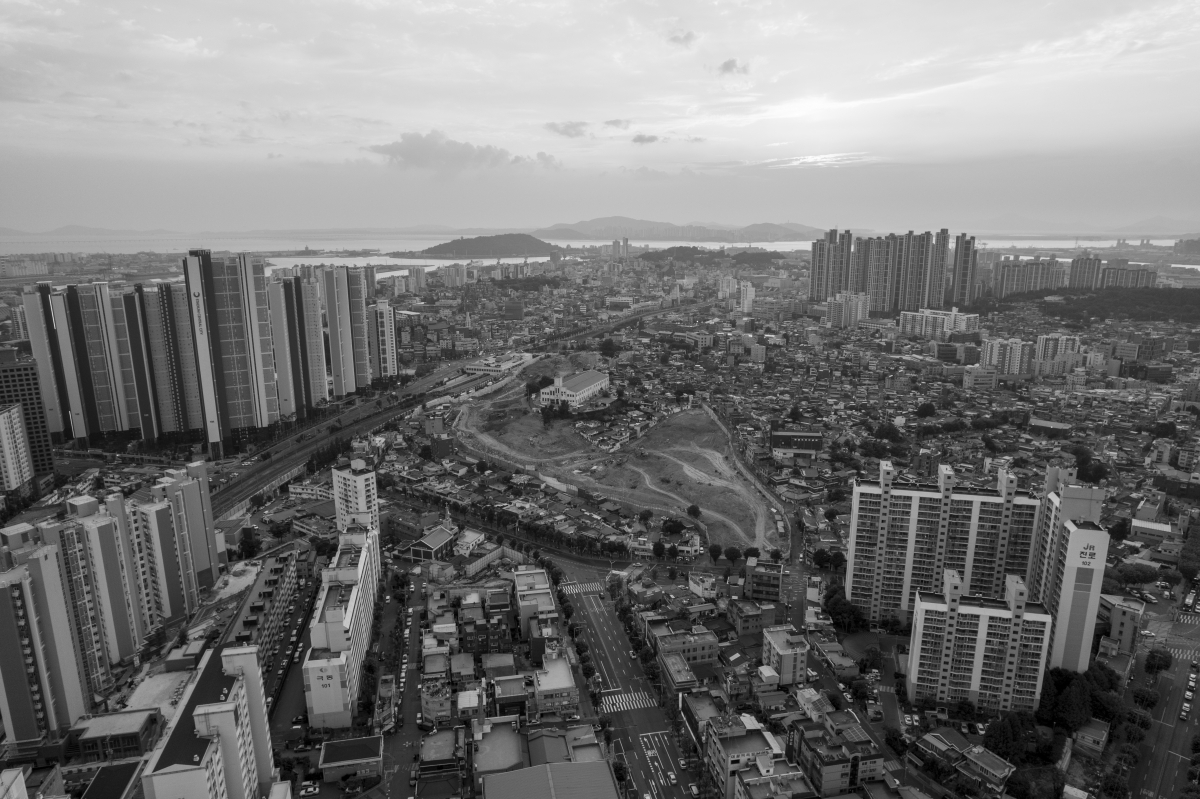 Geumsong redevelopment area, Dong-gu, Incheon (2022) / ⓒJung Jaekyung
Geumsong redevelopment area, Dong-gu, Incheon (2022) / ⓒJung Jaekyung
The exhibition offers a scenario derived from the joint research and design collaboration by a total of three teams of architects and local social researchers, with the research subject being three regions’ urban revitalisation projects that are now underway in Korea. The result presented at the forum is at a preliminary stage of research prior to the final project, and the more developed phase of work is expected to be showcased in the Korean Pavilion. The exhibition is also planned to be a participatory exhibition that takes the form of a game rather than a simple contemplative environment, in order to meet the planning aims of encouraging individuals to respond to the immediate crisis and tasks and enabling them to see results.
The project sites are Dongincheon, which represents the old downtown in Incheon, the small and medium-sized city of Gunsan, and the migrant-friendly city of Ansan. The participating artists of the three teams are active around the actual site, observing the westernised details that were incorporated into the city and farming village during the urbanisation process in Korea, retrace those vestiges, and demand a shift in perception by making a new architectural proposal. The environmental climate triggered by human civilisation is not limited to the issues such as sea level rise, global warming, and carbon dioxide exhaustion; it also stems from ideologies that used architecture and the city to accomplish desire during industrialisation, urbanisation, and modernisation processes. Therefore, the exhibition suggests that the environmental crisis has a chance of being remedied when there is a need to reform how we live and think, as well as reassessing history and legacy.
First, Suh Yehre (principal, Office of Urban Terrains Lab) and Min Woongi (principal, Space Beam) conducted research focusing on the Baedari neighbourhood in Dongincheon. Incheon is a major city in Korea that ranks third in population density after Seoul and Busan, and it is also known as a cosmopolitan city in Northeast Asia from a geopolitical perspective. It is a representative metropolis in Korea which has been continuously promoting development and growth since the 1990s. The opening of Incheon International Airport in 2001, the development of Songdo New City and the inauguration of the Free Economic Zone Authority in 2003, the opening of Incheon Bridge in 2009, and the Cheongna, Yeongjong District Development and Urban Revitalisation Business in 2014 are all evidence of Incheon’s desire for new development. This degree of government commitment to developing the city has just recently reached Dongincheon, which is the old downtown of Incheon. However, in each agenda, the government’s proposal did not take symbiosis into account, so local residents started to seek ways to revitalise the region on their own. Suh Yehre and Min Woongi saw the potential for a community in such an independent activity and explored the possible value that architecture may generate in such an environment.
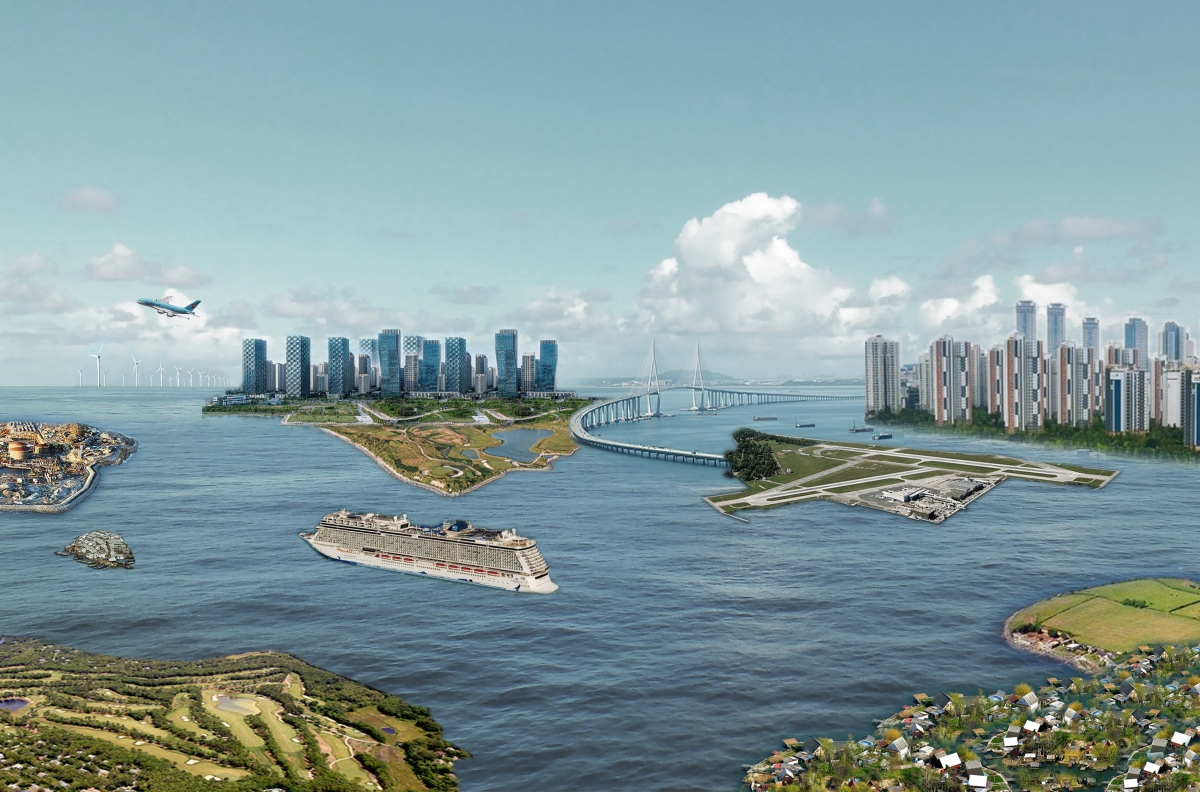 Archipelago of Dreams / ⓒ Urban Terrains Lab + SPACE BEAM
Archipelago of Dreams / ⓒ Urban Terrains Lab + SPACE BEAM
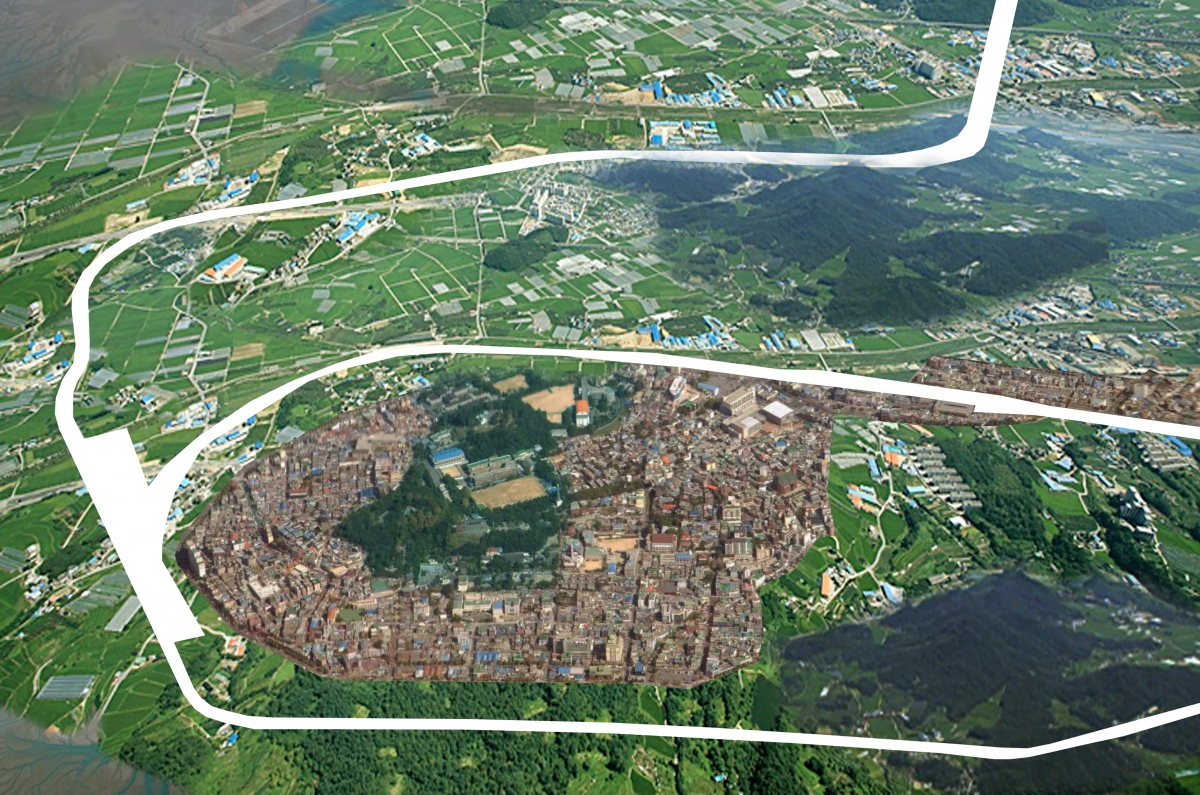 Villages of the Earthbound / ⓒ Urban Terrains Lab + SPACE BEAM
Villages of the Earthbound / ⓒ Urban Terrains Lab + SPACE BEAM
They provide future predictions using two contrasting scenarios based on local research about Dongincheon. The first is the archipelago of a dreams for those who wish to stay in the Holocene Epoch. In that site, which is meant to be constructed on the island floating in the water due to the ongoing environmental crisis, a new island will replace the deteriorating island every twenty to thirty years. If the hitherto developmental paradigm is maintained, this is the future that we will see come to pass. The second is a city built for the people who will remain on earth after the Anthropocene Epoch. If we choose to cultivate and preserve the earth prior to developing anything, we can establish urban and farming village lifestyles that are ideal for nomadic life, allowing humans and non- humans to build together so that we can finally live in harmony together. In this way, the future community proposed by the two artists through the case study of Dongincheon emphasises co-immunism, making-with, and care as its keywords, leaving last impression of how to live independently and in unity.
Next, Yoon Zoosun (professor, Chungnam National University) who has been continuing on-site research in Gunsan with the SoA, paid attention to a small and medium-sized city of Gunsan in Korea. They predicted that by 2086, the year circled by the exhibition’s theme, Korea will experience a demographic cliff, the countryside will slowly become extinct, and administrative districts and territory would become unworkable. Accordingly, they searched for a new community while paying attention to the growing consequences of a dynamic relational population rather than the settled population based on the territory and borders. Relationship population refers to people who have not permanently migrated or settled in a specific region but continue to visit that region in order to develop meaningful relationships. Moreover, in light of the fact that the population continues to decline, they maintained fixed in their opinion that regional revitalisation aimed at reactivation is no longer feasible, and advocated low-density design that will create a pleasant density by making the remaining, empty space vanish. The methodology based on this premise is ‘Do It Together (hereinafter DIT)’, and it embrace not only human beings but also nature as the subject, ultimately taking into account the repairing of relationships between community and nature. In that manner, Gunsan, as a future community in 2086, presents a regional design of extinction for transition under the theme of ‘destructive creation’ against ‘creative destruction’, which has served as capitalism’s ideology of development.
Meanwhile, we can highlight three regional characteristics of Gunsan that provide a premise for Gunsan as a future community. It is a region vulnerable to sea level rise, it is one of the top twenty cities, counties, and districts with the largest number of unoccupied units in aged apartments, and it is a city with a relational population. Under these conditions, the case of Gunsan, which suggests the design of the transition period through the DIT, demonstrates an attempt to return to nature from artificial space through a new community based on the relationship.
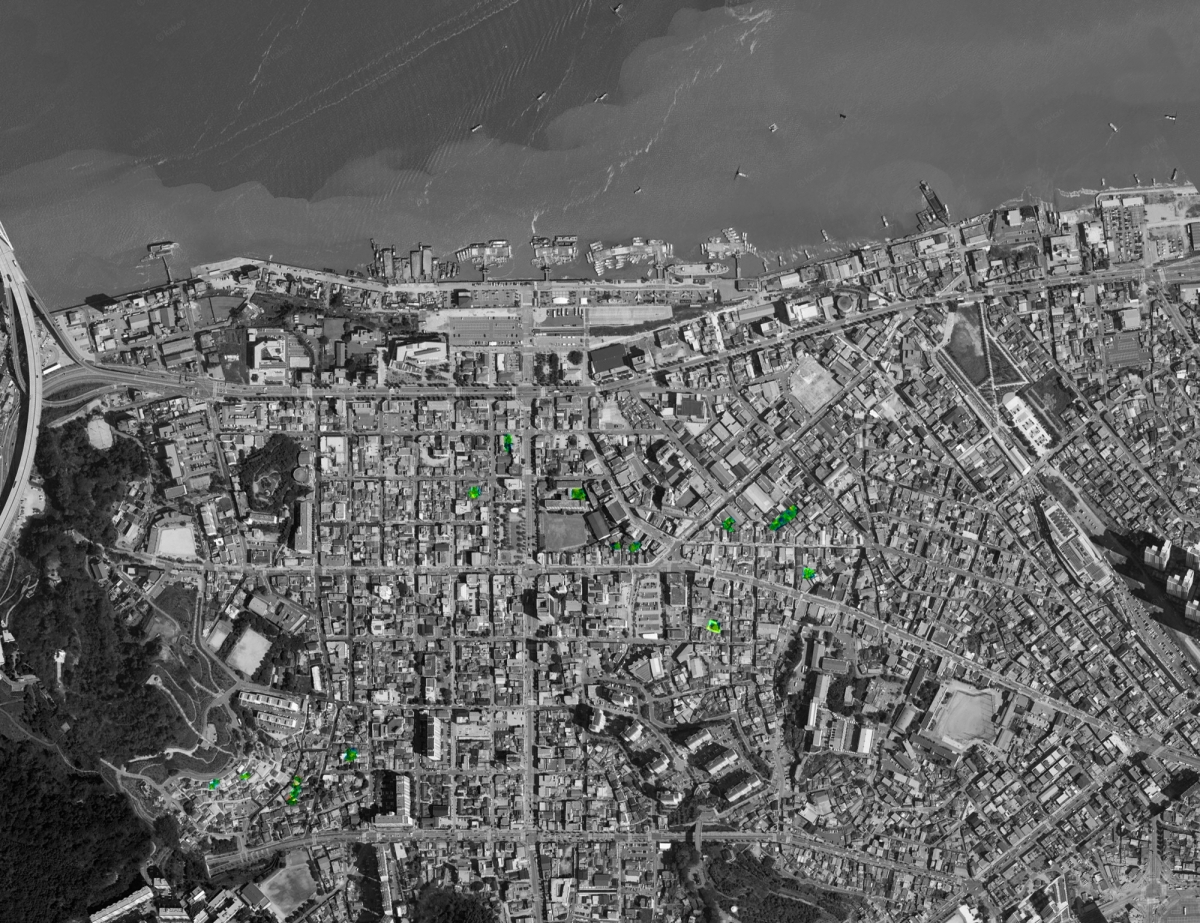
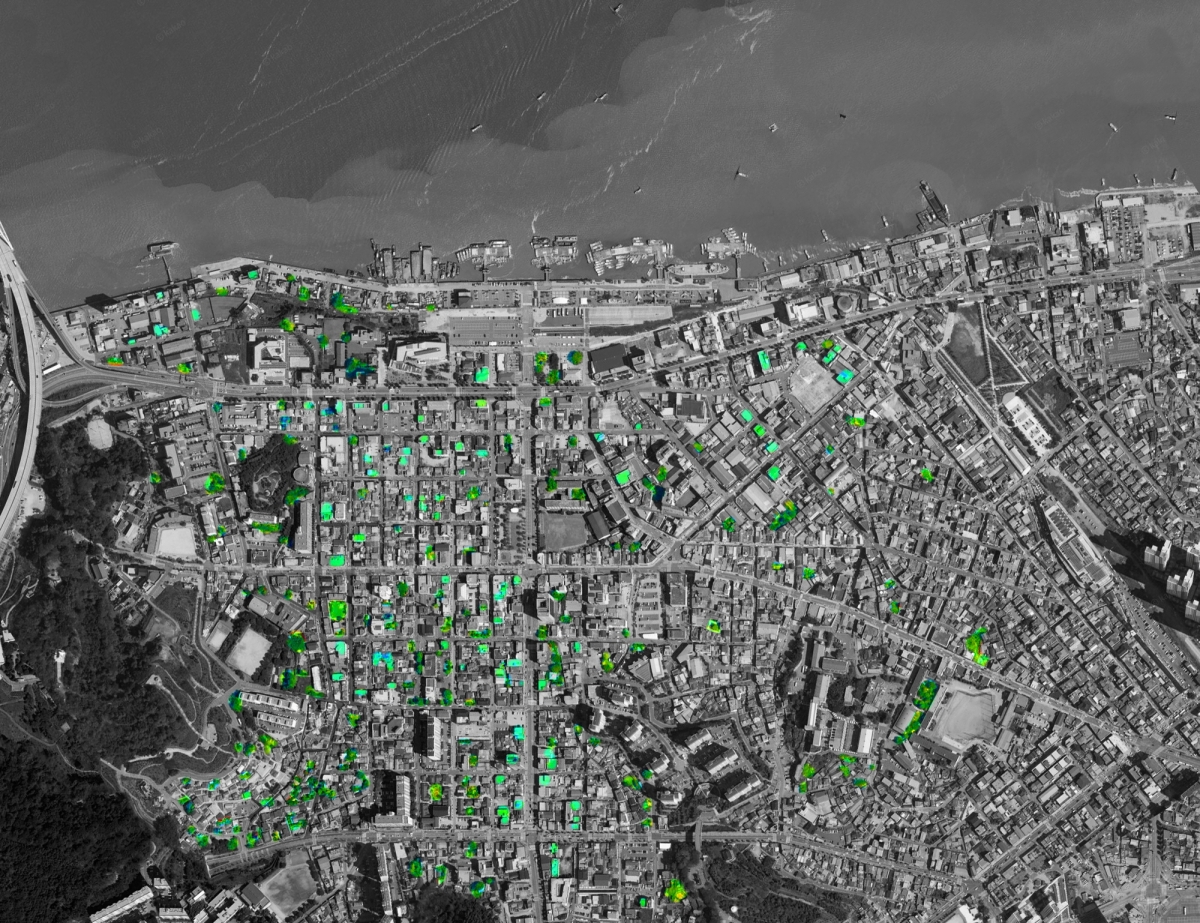
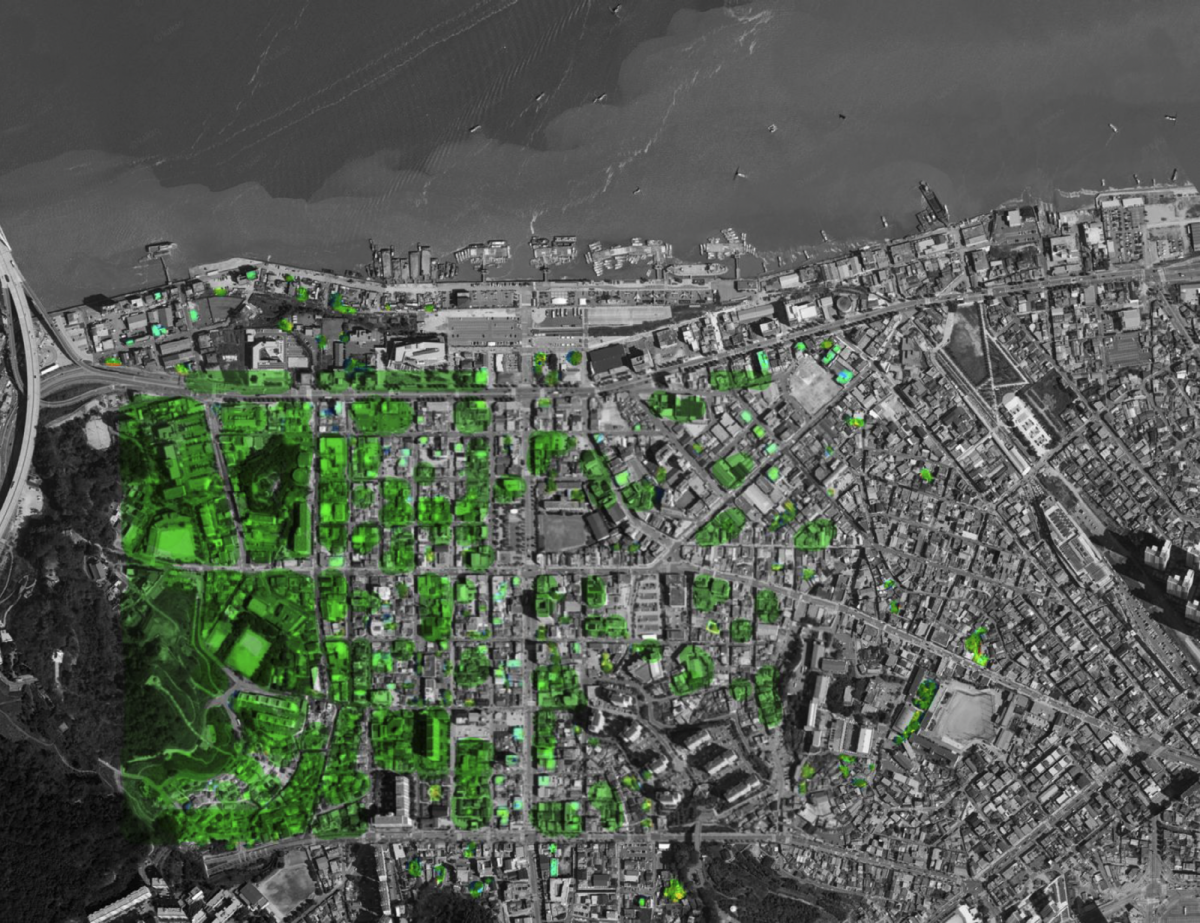 Increasing vacancy rates in old apartments in the old city center of Gunsan / ⓒSoA
Increasing vacancy rates in old apartments in the old city center of Gunsan / ⓒSoA
A New York-based design and research office N H D M and Kim Wolsik (Principal, Seems Like Community) cover the issue of mobility and migration by focusing on Ansan in Gyeonggi-do. Located on the periphery of Seoul, Ansan has witnessed considerable changes in its urban appearance during the modern history of development, ever since it was planned as a new industrial city with an industrial complex in 1977. Especially, as the 1980s approached, manpower dropped due to population decline and divergence from the labour population in the manufacturing industry, therefore an industrial training system was implemented in 1992, resulting in an exponential surge of foreign workers. In Ansan, which is the local government with the highest proportion of the foreign population in the entire country, immigrant communities are being established around the neighbourhood of Wongok-dong, which has been designated as a Special Multi-Cultural Village Zone. The two artists who conducted on-site research shared the criticism that a relevant discussion of the issues of migration, moving, climate crisis, and seeking new community are not actively being pursued, despite the fact that they are now occurring in Korean society. So they are urging a shift in perception by proposing an immigrant community of a hybrid identity and new collectiveness to Ansan. The proposed location claims to be multi-cultural, but on the other hand it is far from a space in which the logic of severance and exclusion is rampant. They recognise that the escalating environmental crisis is conjunctly related to sociocultural and economic conditions, and they suggest that the problems of migration and mobility will be what we will soon encounter. They also seek space as a place for flexible cultural exchange between natives and immigrants. Because the two artists researched Ansan, we may contemplate the problem of migration in multifaceted ways, which will become a more universal agenda in the near future.
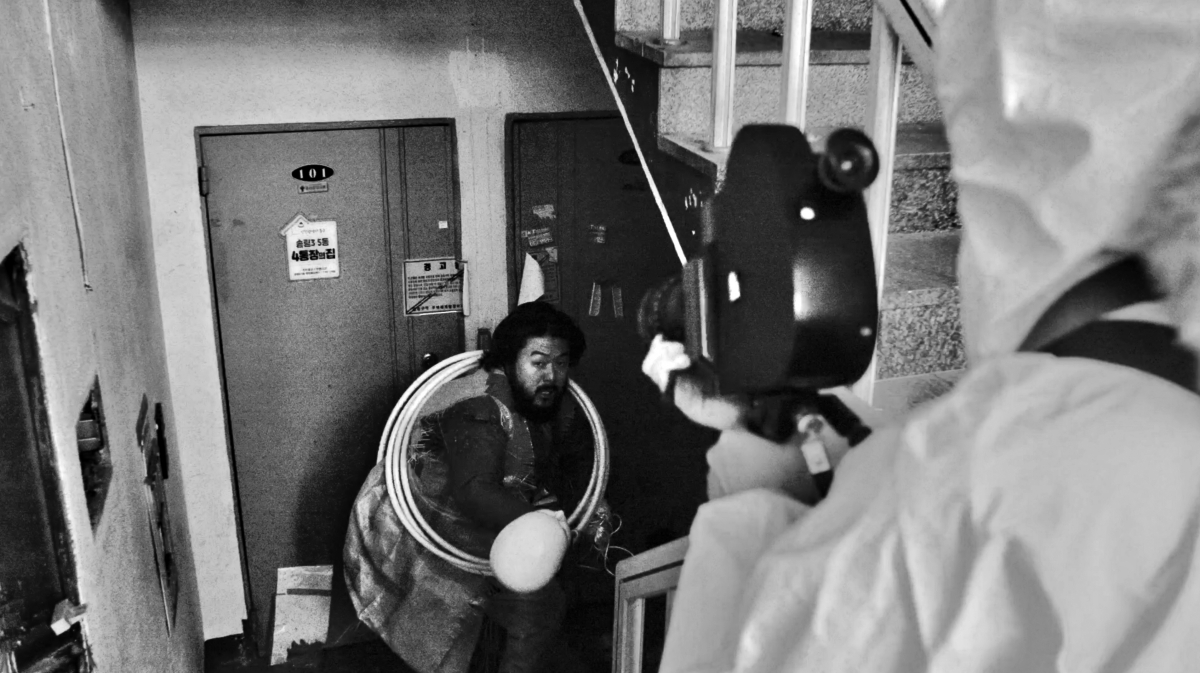 A still image from a ‘2086 future scenario’ test video reconstructed based on the history of urban development (2022) / ⓒJung Jaekyung
A still image from a ‘2086 future scenario’ test video reconstructed based on the history of urban development (2022) / ⓒJung Jaekyung
Lastly, Jung Jaekyung presents a future scenario on the theme of the Korean Pavilion through a video. The arc of the exhibition, which was planned along a defined philosophy and methodology, is scheduled for display this May at the Korean Pavilion.




